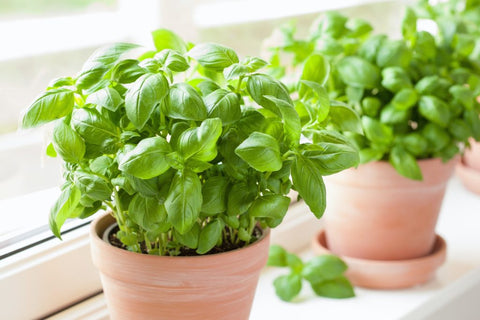As winter's chill envelops the outdoors, gardeners and flower enthusiasts eagerly seek ways to infuse their living spaces with the warmth and vibrancy of spring. Forcing bulbs indoors is a magical practice that allows you to coax tulips, daffodils, hyacinths, and other beloved spring bulbs into early bloom, bringing a burst of color and fragrance to your home during the colder months. In this guide, we'll explore the art of forcing bulbs indoors, step by step, and share tips to ensure a successful and delightful indoor gardening experience.The following content also has some reference value for raised garden beds.

1. Choosing the Right Bulbs
The first step in the journey of forcing bulbs indoors is selecting the right bulbs. Not all bulbs are suitable for forcing, so choose varieties known for their indoor-friendly characteristics.
Popular Indoor Forcing Bulbs:
- Tulips: Available in an array of colors and shapes, tulips are classic choices for indoor forcing.
- Daffodils (Narcissus): With their cheerful blooms and sweet fragrance, daffodils are excellent for indoor forcing.
- Hyacinths: Known for their intense fragrance, hyacinths bring a touch of elegance and scent to indoor spaces.
- Crocuses: These petite blooms add a pop of color and are well-suited for indoor containers.
2. Timing and Pre-Chilling
Forcing bulbs mimics the natural process of winter dormancy, and timing plays a crucial role in achieving successful blooms. Pre-chilling is essential for bulbs that require a period of cold to break dormancy.
Timing Considerations:
- Research Specific Bulb Requirements: Different bulbs have varied chilling requirements. Check the specific needs of the bulbs you've chosen.
- Plan According to Bloom Time: Consider the desired bloom time and count backward to determine the ideal planting time.
Pre-Chilling Process:
- Refrigerator Method: Place bulbs in a paper bag and refrigerate for the recommended chilling duration. Avoid storing them with fruits, as the ethylene gas produced can affect flowering.
- Cold Frame or Outdoor Chilling: Some bulbs benefit from pre-chilling in a cold frame or by planting them directly in outdoor containers and allowing them to experience natural winter temperatures.
3. Selecting Containers and Planting Medium
The choice of containers and planting medium contributes to the success of forcing bulbs indoors. Optimal conditions ensure proper drainage and support healthy bulb growth.
Container Options:
- Clay Pots: Provide good airflow and help prevent overwatering.
- Forcing Glasses or Vases: Ideal for hyacinths, allowing you to witness the roots and bulbs as they grow in water.
- Plastic or Ceramic Containers: Choose containers with drainage holes to prevent waterlogging.
Planting Medium:
- Well-Draining Soil Mix: Use a well-draining soil mix with a combination of potting soil, perlite, and sand.
- Bulb Fiber or Coir: An alternative to soil, bulb fiber or coir provides excellent aeration and drainage.
4. Planting Bulbs
Planting bulbs with care ensures strong root development and robust blooms. Follow these steps for a successful planting process:
Planting Depth:
- Follow Bulb-Specific Guidelines: Different bulbs require varying planting depths. Generally, bulbs should be planted at a depth that is approximately two to three times their height.
- Layering Bulbs: Experiment with layering bulbs of different varieties in the same container for a stunning display.
Watering and Settling:
- Water Thoroughly After Planting: Ensure the soil is evenly moist after planting.
- Allow Settling Time: Allow the planted containers to settle for a short period to eliminate air pockets.

5. Providing the Right Environment
Creating the right environment is crucial for the success of forcing bulbs indoors. Mimic the conditions that bulbs would naturally experience during winter dormancy.
Temperature and Light:
- Cool Location: Place planted containers in a cool location with temperatures between 35°F to 48°F (1.6°C to 8.9°C) during the chilling period.
- Indirect Light: While chilling, provide indirect light to prevent the bulbs from sprouting prematurely.
Transition to Warmer Conditions:
- Move to Warmer Area: Once the chilling period is complete, transition the containers to a slightly warmer location with temperatures around 50°F to 60°F (10°C to 15.6°C).
- Increase Light Exposure: Introduce the bulbs gradually to more light, helping them acclimate before placing them in bright, direct sunlight.
6. Watering and Care
Proper watering and care play a significant role in the success of forcing bulbs indoors. Follow these guidelines to keep your bulbs healthy and thriving.
Watering Tips:
- Maintain Even Moisture: Keep the soil consistently moist but not waterlogged.
- Avoid Overwatering: Bulbs can rot if the soil remains excessively wet, so be mindful of water levels.
Fertilizing:
- Apply Fertilizer Sparingly: Once shoots emerge, apply a diluted, balanced liquid fertilizer to support healthy growth.
- Cease Fertilizing After Blooming: Stop fertilizing once the flowers have bloomed to allow the bulbs to enter a natural dormancy phase.
7. Enjoying the Blooms
As the days lengthen and the first signs of green shoots emerge, the anticipation of blooms fills the air. Enjoy the gradual unfolding of colors and fragrances.
Temperature and Display:
- Ideal Blooming Conditions: Once the shoots are about 2 to 3 inches tall, move the containers to a warmer, well-lit location for optimal blooming conditions.
- Avoid Overheating: Keep the containers away from direct heat sources to prevent the bulbs from overheating.
Arranging Indoor Displays:
- Create Stunning Arrangements: Arrange forced bulbs in decorative containers or vases for a visually pleasing display.
- Mix with Other Indoor Plants: Integrate forced bulbs with other indoor plants to create a lush and inviting atmosphere.

Conclusion:
Forcing bulbs indoors is a rewarding practice that brings a touch of springtime joy to the heart of winter. By carefully selecting bulbs, providing the right chilling conditions, and creating an optimal environment for growth, you can orchestrate a beautiful indoor garden that defies the winter blues. So, as you embark on this journey of coaxing blooms from bulbs, savor each stage of the process and relish the vibrant colors and fragrances that transform your home into a haven of early spring beauty.









